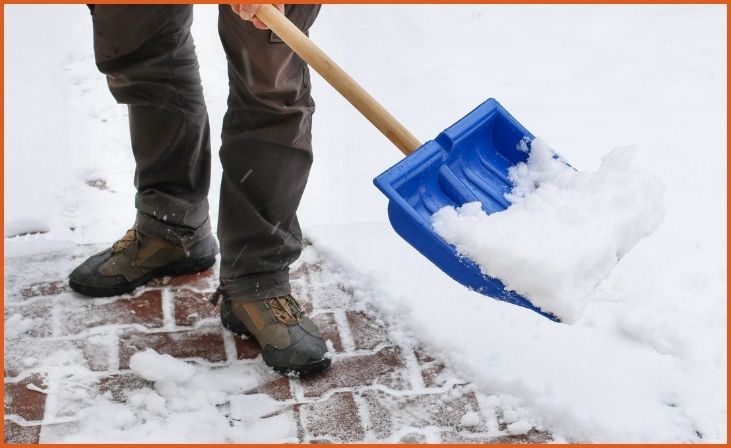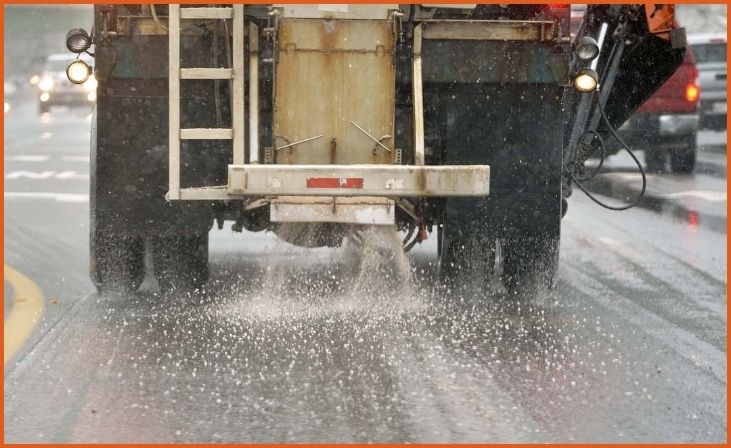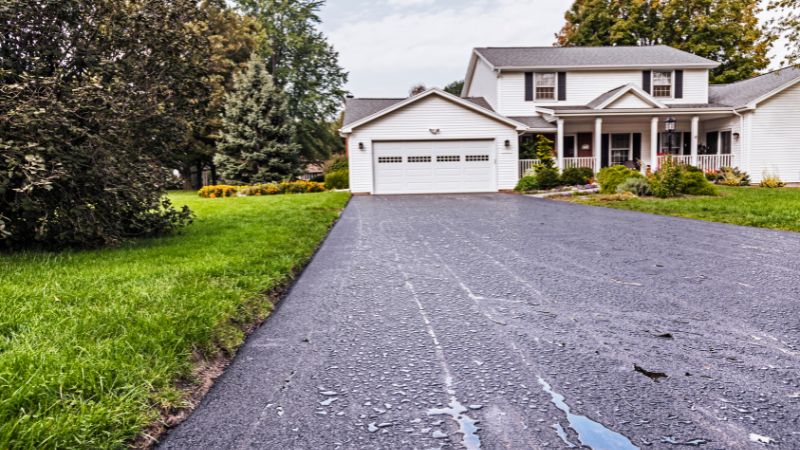Winter can be harsh on asphalt surfaces, leading to cracks, potholes, and premature deterioration. Proper maintenance during the colder months is crucial to extend the life of your asphalt and prevent costly repairs. Implementing effective winter maintenance strategies can safeguard your asphalt from ice, snow, and extreme temperatures. From regular inspections to timely repairs, these tips will help you keep your asphalt in top condition throughout the winter season. By following these 8 asphalt maintenance tips, you’ll ensure a smoother, safer surface that stands up to the winter weather and enhances the longevity of your asphalt investment.
8 Asphalt Maintenance Tips For Winter
1. Conduct Regular Inspections

Regular inspections of your asphalt are vital during the winter months to catch and address issues early. Cold temperatures and moisture can exacerbate existing cracks and cause new ones to form. Check your asphalt surfaces for signs of damage such as cracks, potholes, and uneven patches. Look for areas where water may be pooling, as these are prone to freeze and cause further damage. Inspections should be conducted at least once a month and after any severe weather events. Early detection of problems allows for timely repairs, which can prevent more extensive damage and costly repairs down the line. If you are uncertain about the suitable repair techniques or the degree of damage, it is advisable to consult with an experienced asphalt contractor.
Also Read:- How To Remove Old Oil Stains From Asphalt
2. Address Cracks Promptly
Cracks in asphalt can quickly worsen during the winter as water seeps in and freezes, causing the cracks to expand. To prevent this, fill cracks as soon as they appear. Start by cleaning the cracks of debris and moisture. Use a high-quality crack filler or sealant designed for winter conditions, ensuring it is applied according to the manufacturer’s instructions. For larger cracks, a combination of crack filler and asphalt patching may be necessary. Properly filled cracks help to prevent further water infiltration and reduce the risk of more severe damage. Regular maintenance and timely repairs are key to extending the lifespan of your asphalt surface.
3. Apply a Winter Sealant
Applying a winter-grade sealant to your asphalt can offer additional protection against harsh weather conditions. Sealants create a barrier that helps prevent moisture from penetrating the asphalt and reduces the risk of freeze-thaw damage. Choose a sealant specifically formulated for cold weather, as these are designed to adhere better and provide more effective protection in lower temperatures. The application process typically involves cleaning the asphalt surface, applying the sealant evenly, and allowing it to cure properly. Regular sealing, ideally every one to two years, will help maintain the integrity of your asphalt and enhance its resistance to winter wear and tear.
4. Remove Snow and Ice Promptly

Snow and ice accumulation on asphalt surfaces can lead to significant damage if not managed properly. Heavy snow can cause additional weight stress on the surface, while ice can lead to the formation of cracks and potholes. Use a snow shovel or snow blower to remove snow as soon as possible to prevent it from compacting and forming ice. For ice removal, avoid using metal shovels or abrasive materials that can damage the asphalt. Instead, use a chemical de-icer that is safe for asphalt surfaces. Regular snow and ice removal helps prevent surface damage and ensures safer driving conditions.
5. Repair Potholes Immediately
Potholes are a common problem during the winter months and can cause significant damage to your asphalt if left unaddressed. Potholes form when cracks or surface damage allow water to seep in, freeze, and expand, creating depressions. To repair a pothole, start by cleaning out the damaged area to remove any debris and loose material. Fill the pothole with a cold-patch asphalt mix, compacting it thoroughly to ensure a smooth surface. For larger or more severe potholes, it may be necessary to use a hot-mix asphalt and consult a professional for a more permanent repair. Prompt repairs are essential to prevent further deterioration and maintain the safety and functionality of your asphalt surface.
6. Maintain Proper Drainage
Proper drainage is crucial for preventing water damage to your asphalt during winter. Ensure that your asphalt surface is properly sloped to allow water to flow away from the surface rather than pooling. Check for any blockages in drains, gutters, or downspouts and clear them regularly. Standing water can freeze and lead to surface damage, including cracks and potholes. Installing and maintaining adequate drainage systems will help prevent water from accumulating and reduce the risk of winter-related damage to your asphalt. Regular maintenance of drainage systems is a proactive measure that helps protect your asphalt investment.
7. Use Caution with Salt and Chemicals

While salt and other de-icing chemicals can help keep your asphalt surfaces safe from ice, excessive use can lead to long-term damage. Salt can erode the asphalt over time, leading to cracks and surface deterioration. To minimize damage, use de-icers sparingly and opt for products designed for asphalt use. Avoid using sand or abrasive materials that can scratch the surface. If possible, choose eco-friendly de-icers that are less harsh on asphalt and the environment. Maintaining the quality of your asphalt and ensuring safety must be balanced through appropriate application and moderation.
8. Consult a Professional for Major Issues
For significant damage or ongoing problems with your asphalt, it’s advisable to consult a professional asphalt contractor. Professionals have the expertise and equipment to assess and address major issues effectively. They can comprehensively evaluate your asphalt surface and recommend appropriate repair or maintenance solutions. Whether you need extensive repairs, a new sealant application, or advice on improving your asphalt’s winter performance, a professional contractor can help ensure that your asphalt remains in good condition and performs well throughout the winter season. Investing in professional services can save you money in the long run by preventing more serious damage.
Also Read:- Tips For Quality Asphalt Pavements
Conclusion
Maintaining your asphalt through the winter months is essential for preventing damage and ensuring its longevity. By following these 8 winter maintenance tips, you can protect your surface from harsh weather conditions and avoid costly repairs. Regular inspections, prompt repairs, and appropriate sealing are key to keeping your asphalt in excellent shape. Take proactive steps this winter to preserve the quality and appearance of your asphalt, ensuring a smoother, more durable surface for years to come.
FAQs
How often should I inspect my asphalt during winter?
Inspect your asphalt at least once a month during winter to check for damage and address any issues promptly.
What should I do if I notice cracks in my asphalt?
Fill cracks with a quality asphalt crack filler and seal the surface to prevent water infiltration and further damage.



